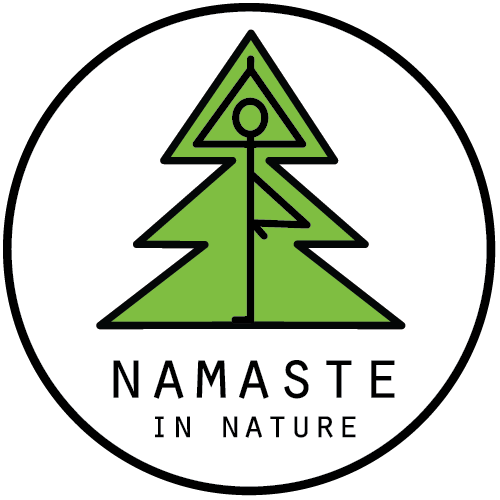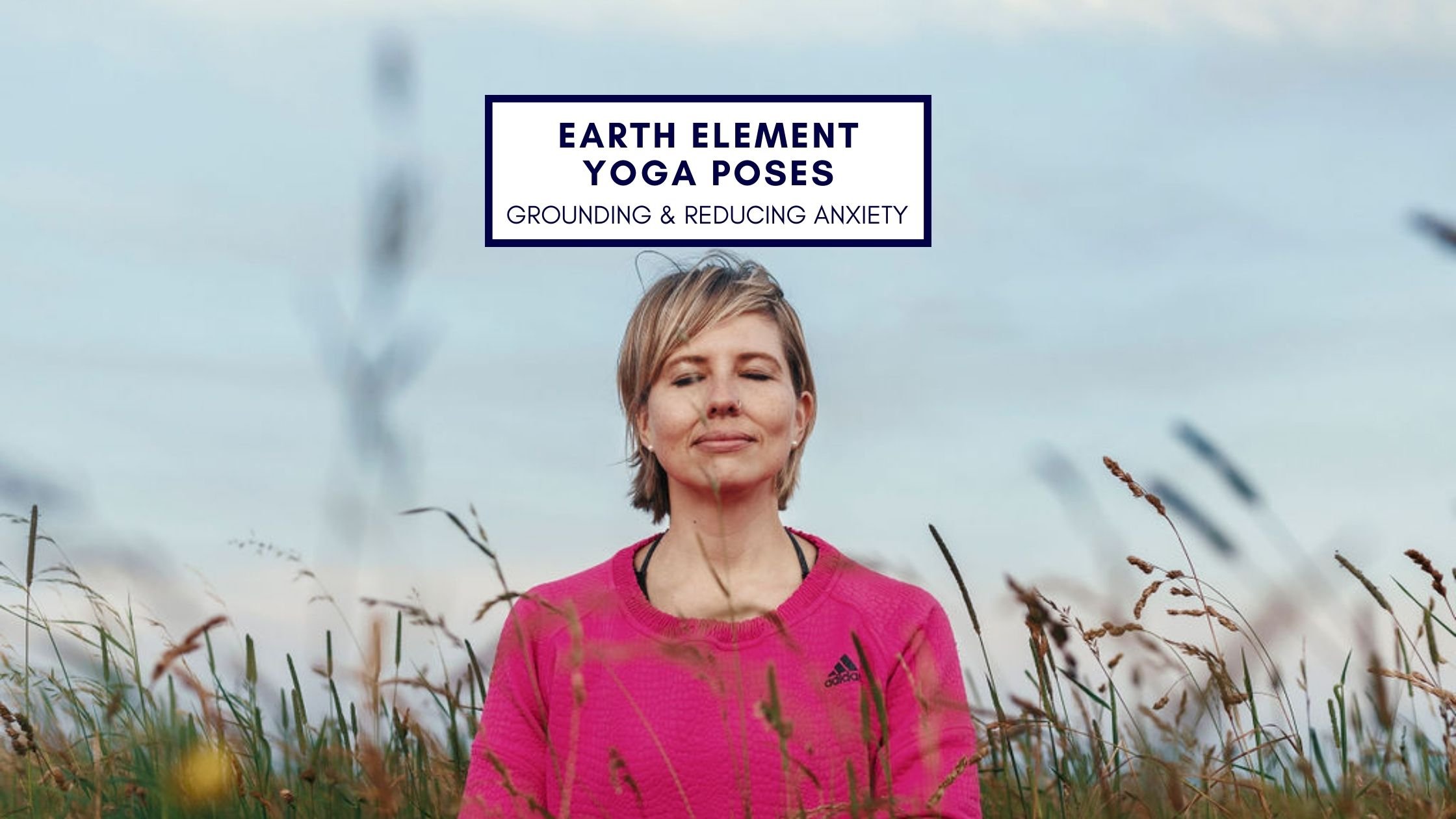Winter Yoga Poses, Sequences, Themes, Videos
This post is all about Yoga for the Winter Season.
Just like nature, our environment is always changing and we need to be able to adjust and adapt to change along with it.
The winter season is all about slowing down, calming, grounding, self-reflection and introspection.
✅ What is the Winter Solstice?
▶️ 15 Minute Yoga for the Winter Solstice
▶️ 15 Minute Yoga for Winter Sports: Snowboarding & Skiing
✅ Yoga and the Earth Element
▶️ 25 Minute Earth Element Yoga Flow
▶️ 25 Minute Winter Yoga Nidra Guided Relaxation
✅ Winter Journaling Prompts
✅ Tea for Winter Warmth and Wellness
WHAT IS THE WINTER SOLSTICE?
The Winter Solstice is the shortest day of the year.
(In the Northern Hemisphere, anyways… In the Southern Hemisphere, it’s the opposite/longest day of the year.)
It’s also widely considered to be the first official day of winter.
The word solstice is derived from the Latin sol ("sun") and sistere ("to stand still"), because at the solstices, the Sun's declination appears to "stand still"; that is, the seasonal movement of the Sun's daily path (as seen from Earth) pauses at a northern or southern limit before reversing direction.
The solstice happens twice each year when the sun reaches its maximum or minimum declination, marked by the longest and shortest days (about June 21 and December 21 or 22).
WINTER SOLSTICE SCIENCE
We experience seasons here on Earth because the Earth is tilted on its rotational axis. As our planet moves around the sun, each hemisphere experiences summer when it's tilted toward the sun and winter when it's tilted away from the sun.
So now the Northern Hemisphere is going to start tilting back towards the sun and the days only get longer from here!
WINTER SOLSTICE HISTORY & RELIGION
It’s no coincidence that many religious holidays align with the return of longer days including Christmas, Hanukkah and Kwanzaa.
The Winter Solstice is thought to be one of the main reasons Stone Henge was built in the UK.
"Alban Arthan" means for "Light of Winter" in the Welsh language. It is likely the oldest seasonal festival of humankind. The Winter Solstice was considered a time of death and rebirth in Druidic traditions.
Saturnalia began on December 17 and lasted for seven days in Ancient Rome. It honored the Roman god of agriculture aka Saturn. During this time, Romans enjoyed carnival-like festivities resembling today’s Mardi Gras and even paused their war efforts. Saturnalia continued for centuries.
As Christian influence become more predominant in Roman culture, some of the festival's customs were combined into celebrations surrounding Christmas and the New Year.
The Dongzhi Winter Solstice Festival is rooted in ancient Chinese culture. The name roughly translates to "extreme of winter."
According to Chinese medicine theory this was the apex of yin. Yin represents darkness and cold and stillness, thus the longest day of winter. Dongzhi signifies the return yang; the gradual return of more light and warmth.
I love that so many people around the world have similar traditions and celebrations.
YOGA FOR THE WINTER SOLSTICE
This short & sweet 15 minute yoga flow will help you stretch and celebrate this natural milestone.
This practice includes one salutation to mark the shortest day and both yin and yang postures. (Keep reading about the ancient roots of the Solstice below to find out why.)
Yoga for Winter Sports: Snowboarding & Skiing
Woo Hoo! It’s time for your favorite winter snow sports like snowboarding, skiing, snowshoeing and hiking.
This 15 minute yoga flow will help open up your hips, stretch your hamstrings and gently twist the tightness out of your body.
You can do this before and/or after your favorite snow time activities or a day on the slopes!
Yoga & the Earth Element
Earth represents the solid state of matter.
The season most associated with the Earth element is Winter, but it’s good to keep in touch with all the elements year round.
The sense most associated with the Earth element is smell.
Earth element yoga poses focus on rooting down and grounding yourself. Grounding is great for anxiety and calming or cooling the body and mind.
You ARE the Earth Element!
99% of the human body is made up of Oxygen, Hydrogen, Carbon, Nitrogen, Calcium and Phosphorus; some of the most common elements that make up Earth.
25 Minute Earth Element Yoga Flow
This gentle, 25-minute Earth Element Yoga Flow is great for beginners and yogis wanting to connect with the Earth element. We’ll flow through about 20 minutes of poses (asanas) followed by a short yoga nidra relaxation.
I include a little Earthing challenge to continue your yoga practice off the mat so stay tuned til the end for that!
What is Yoga Nidra?
Unlike what we traditionally think of as yoga made up of physical poses (asanas), there is no movement during Yoga Nidra. You just lay down and listen to a teacher guide you through techniques that involve breathing, visualization and body scanning.
This practice is great for the Winter season.
If you really enjoyed that, find more free Yoga Nidra videos and learn more about Yoga Nidra here:
Winter Journaling Prompts
December Journaling for Self-Reflection
December is a beautiful opportunity to reflect on the past year. During this 31-day challenge, we invite you to think about what has changed and what you can let go of.
When you reflect on how you have been living, you can compare your current reality to your desired outcome (or aspirational reality) and stay on the path to your dreams.
Here are 31 journaling prompts to help you focus on the past year.
January Journaling for Manifestation
This month we are focusing on how to manifest your goals and have the best year yet. We designed the manifestation journaling prompts to ease you into setting a New Year Intention instead of a New Year Resolution. We hope you take leaps in pursuit of your passion-based aspirations. Maybe most of all, we are here to tell you to “believe in yourself” as you manifest your dreams throughout the year.
Here are 31 journaling prompts to help you manifest what you want this year:
February Journaling for Loving-Kindness
February is the month of love, kindness (also loving-kindness; or metta meditation) and compassion journaling here. As the frosty, freezing days continue on for another month or so, we are happy to provide more cozy, wintertime journaling exercises for invoking more love, kindness and compassion into your life. This comes from the Buddhist tradition called “Metta Prayer” or “Metta Meditation” and the Pali word “Metta” when translated, means “Loving-Kindness Meditation.” This prayer or meditation is an act of generating radical love, empathy, non-violence, benevolence, friendliness and compassion for all beings everywhere.
Here are 29 February journaling prompts for loving-kindness:
Tea for Winter Warmth & Wellness
I’m a big fan of tea!
Now is the time to slow down during the winter months and make more time for restoration, rejuvenation, a relaxation. Whether you’re basking in the warmth of a fire with a good book or a journal, recovering from a cold-weather bug or seasonal affective disorder - I have a list of magical teas that will bring you healing and happiness this winter.
HAPPINESS UPLIFT:
Tulsi tea - Tulsi (also called holy basil or the “elixir of life”) is known for many medicinal properties including mood-uplifting, soothing and relaxing, antimicrobial, supportive of the respiratory and immune systems as well as a powerful adaptogen.
Lemon balm tea - For those wintertime blues, lemon balm offers a bright and sweet cup of sunshine to give you a brighter light in the darker days. Lemon balm helps to relieve anxiety and stress, boosts cognitive function, eases sleep, indigestion and nausea.
CONGESTION, COLD AND FLU:
Ginger tea - Especially for congestion, try a ginger-based tea with lemon, raw honey and 1/2 teaspoon of cayenne. Ginger tea also reduces inflammation, stress and nausea. Ginger tea benefits the respiratory, circulatory and immune systems as well as easing menstrual discomfort.
Licorice tea - Licorice root soothes a scratchy throat, bronchial congestion and inflammation. Licorice can also support the digestive system for gastro-intestinal issues and stomach ulcers. Don’t forget it’s immune-boosting and anti-depressant properties.
RELAXATION AND SLEEP:
Chamomile tea - Chamomile is the holy grail for “taking a load off,” softening the edges of your day and easing into a blissful, restorative sleep. Chamomile can also relieve cold symptoms and inflammation. It is known for lowering blood sugar (diabetes), slowing osteoporosis and a wide collection of other health benefits.
Valerian root tea - The most popular use of valerian root is for help falling asleep by supporting the regulation of nerve cells and calming anxiety. Valerian root also works with pain relief, muscle relaxation, and easing menstrual and menopausal symptoms.
Namaste & Have A Great Day!
💖 Miranda
PS,
Join us December - February for a Winter Waterfall Yoga Hike near Asheville, NC, USA where you may be able to see partially or fully frozen falls!















